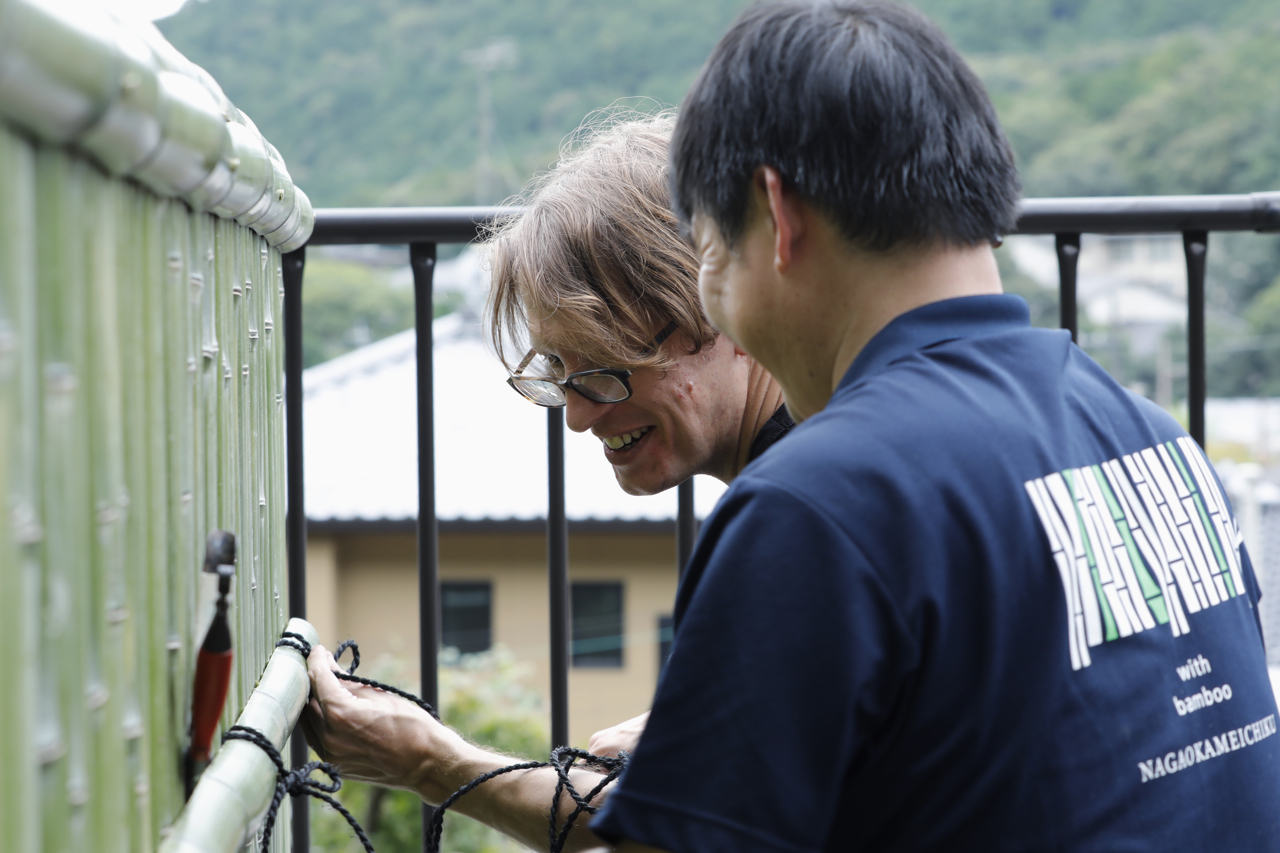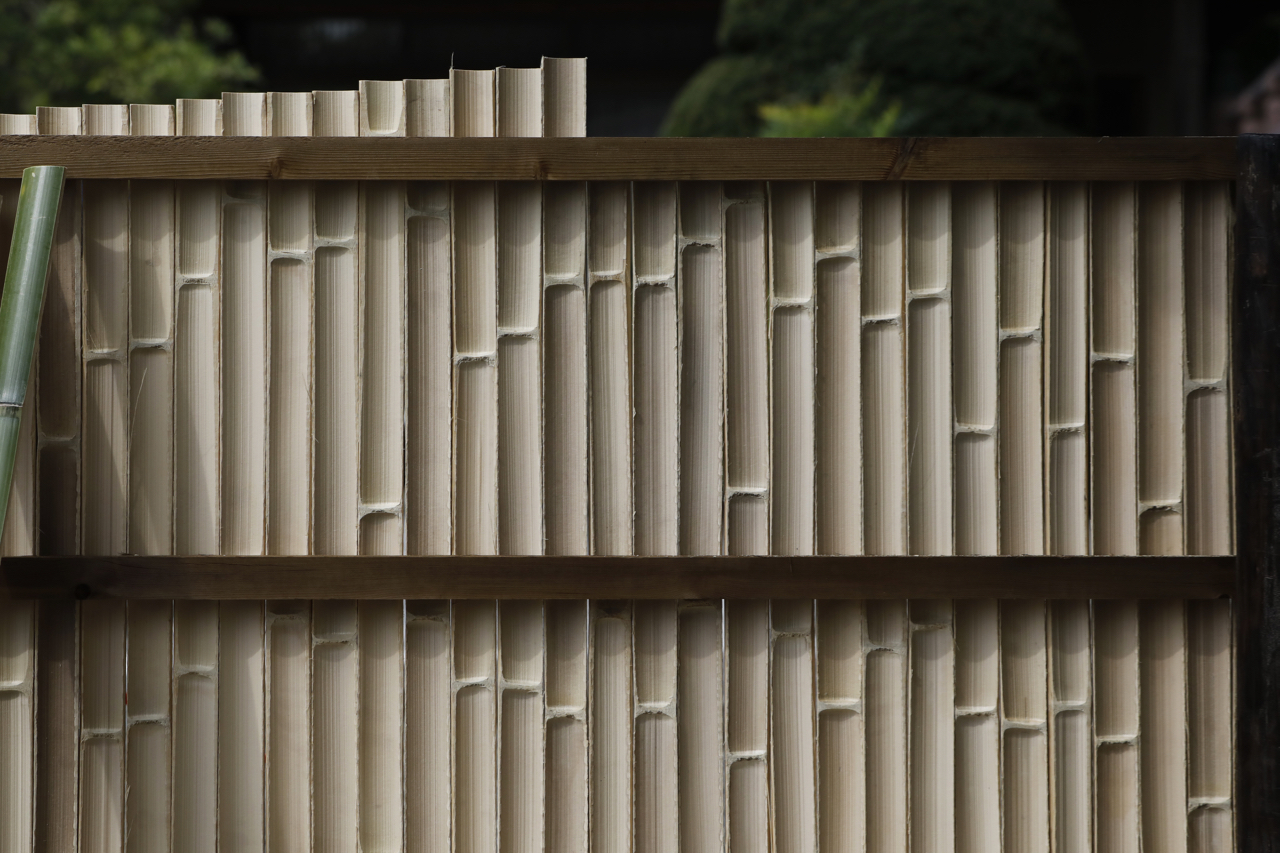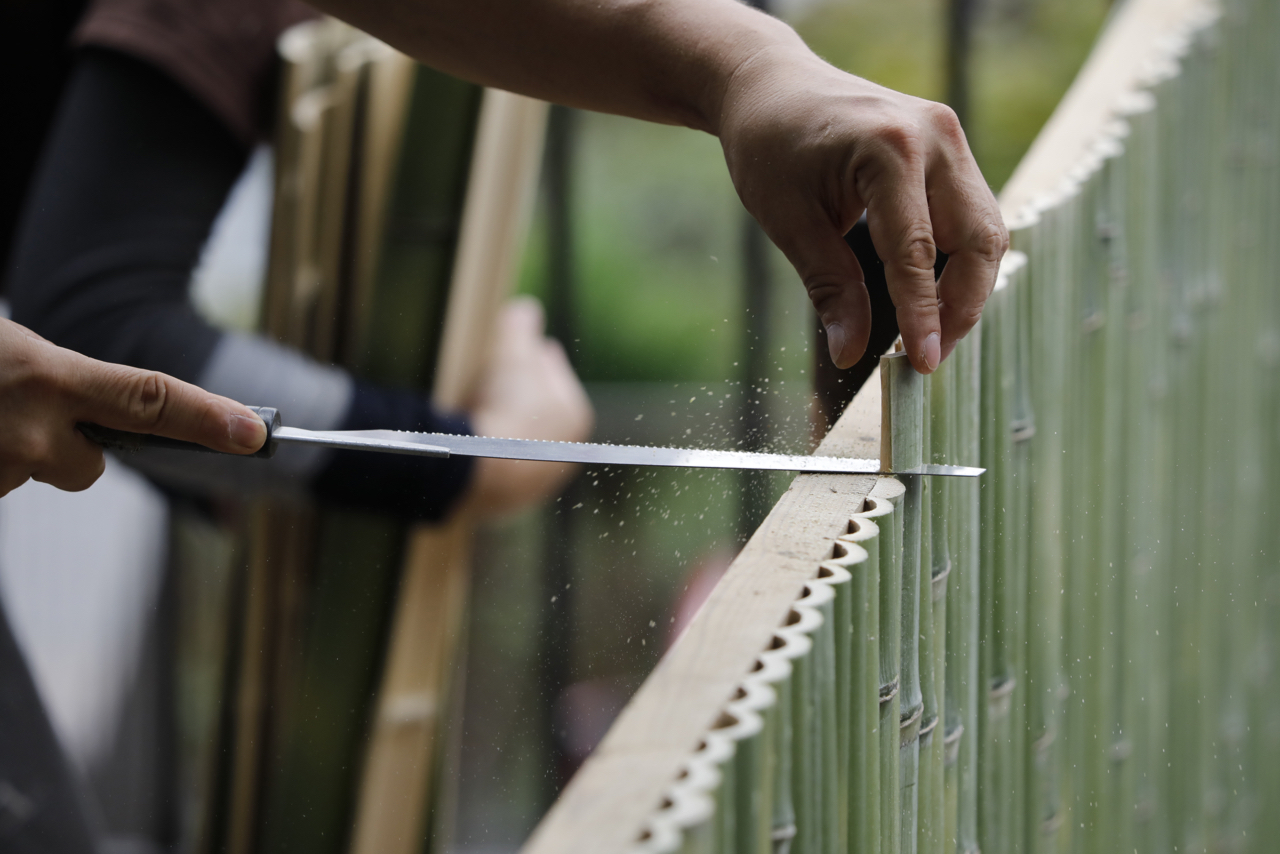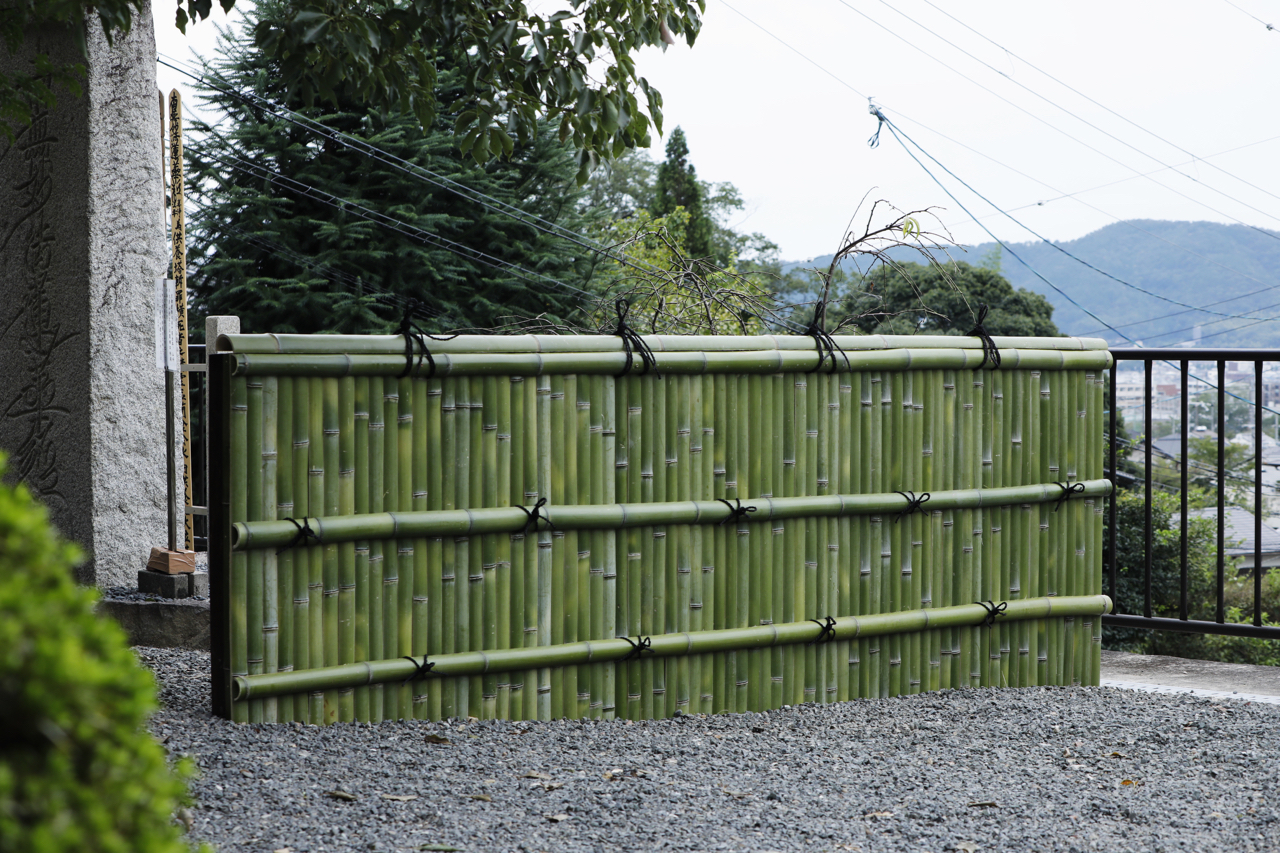
Japanese Bamboo Craft - Bamboo Fence
Experience Thrilling Art and Meet Landscape with Bold Elegance
- Making Bamboo Fences at Temples in Kyoto with a Bamboo Fence Craftspeople
-
Bamboo fences are always seen in temples in Kyoto. They are one of the elements that protect the landscape of Kyoto's historic temples. However, how to protect the landscape of Kyoto's historic temples has become a major issue due to the declining religious affiliation of the Japanese people and the aging of the population with fewer children. In this experience, the bamboo fence you create with the craftspeople will be installed in the temple semi-permanently and become a part of the landscape of the temple in Kyoto. Your work will become a part of Kyoto's history.
Bamboo, the material used for bamboo fences, is hard and has a glassy surface. By pretreating the bamboo and splitting, cutting, and bending it to the right size, craftspeople transform it into a durable yet flexible material that can be used to create bamboo fences in a variety of designs. During the experience, you can learn how to handle bamboo and its characteristics by making bamboo fences with craftspeople. By watching up close, you will be impressed by the craftspeople's quickness, delicacy, precision, power, and eyes for detail in their work. We invite you to experience the skills of Kyoto's master craftspeople in front of your eyes with your own body.



- Japanese bamboo fences that transform space and create beautiful landscapes of Kyoto
-
In Kyoto, the old capital of Japan, bamboo fences are one of the most important elements that evoke a sense of Kyoto. Bamboo fences are traditional Japanese fences and have long been used as boundary dividers between areas that should not be entered, as blindfolds for areas that should not be seen, as a tool for improving ventilation, and as a means of making gardens look more spacious and spaces more colorful. Bamboo fences can be seen especially in Japanese gardens, around buildings, and in shrines and temples, and are designed and created by the craftspeople in various ways to harmonize with the beautiful scenery of the place where they belong.
Bamboo fences developed along with the tea ceremony culture of the Azuchi-Momoyama period. Especially in Kyoto, the center of the tea ceremony culture, bamboo fences were often used in gardens. There are several types of bamboo fences, some of which are named after famous temples in Kyoto, such as "Kenninji-gaki" and "Kinkakuji-gaki.

- Bamboo fence specialists who have worked on Katsura Rikyu
-
Nagaoka Meichiku, a bamboo specialist that designs and creats beatufiul bamboo fences that fit the space in an instant.Nagaoka Meichiku Corporation has a workshop by the river flowing through Kameoka City, Kyoto Prefecture. Nagaoka Meichiku is a group of craftspeople who make bamboo fences and other bamboo products in Kyoto, the center of bamboo culture. The company has gained a high reputation for their high level of techniques for handling bamboo and foresight in selecting quality bamboo, and has been involved in the production and restoration of bamboo fences for historical temples and shrines, such as the restoration of Katsura Rikyu's bamboo fence.
Founded in 1952, the company was highly regarded by the people of Kyoto for its elaborate bamboo fences made of Kyoto's high-quality bamboo called Kyo-Meichiku. However, around 1991, Japan as a whole fell into a major recession, and people's perception of value changed from quality to price, forcing Nagaoka Meichiku, which specializes in expensive bamboo fences forced to retreat. In this situation, they did not give up and continued to cultivate their techniques for the sake of their customers, who demanded them even in the middle of a recession. Although their studio had been destroyed by fire, they overcame the difficulties and have continued to grow without giving up their enthusiasm for bamboo fences and their craft.
Today, in addition to traditional bamboo products, they are developing new products that expand the possibilities of bamboo, such as wine bottle holders, bamboo QR codes, and bamboo art. They are able to create these products because they understand the charm and potential of bamboo better than anyone else, and they hope to brighten people's lives and bring smiles to their faces.
- He says
-
“In the workshop, we will let you know about bamboo and touch it. We hope you would be fascinated by bamboo.”





















- Bamboo fence craftspeople
- Akihiro Mashimo
- A skilled bamboo fence craftsperson at Nagaoka Meichiku who has been working with bamboo for over 20 years. In 2015, he was certified as No.113 “Certified Craftsperson of Kyo-Mono (Kyoto products)” by the Governor of Kyoto Prefecture. *Certified Craftsperson of Kyo-Mono (Kyoto products) is a title given to those who possess the skills to produce the traditional crafts (34 categories) designated by the Governor of Kyoto Prefecture, and those who are particularly skilled and motivated are selected as certified craftspeople.
Access

- A temple in Kyoto (Coordianted upon request.)

